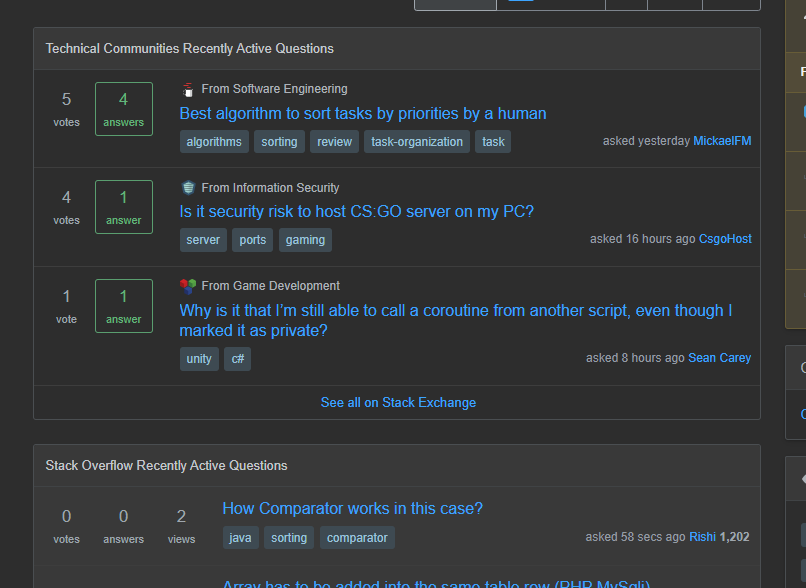Now that experiment appears to fail quite spectacularly, it is maybe a good time to look around and ask, if there could be a different way to achieve what you wanted?
No need to dig deep here - at least six answers right here and multiple comments point that hot network questions are expected to support the kind of integration you're looking for. This kind of hints that experimenting with HNQ may be more productive than messing with primary site UX.
After all, this seems fit the primary purpose of this feature which was recently explained as follows:
encourage movement around the Network and visibility of Network sites
- One thing that looks particularly promising in this regard is a setting that favors questions with multiple answers. Currently this parameter counts up to 10 answers and since technology sites tend to have less answers, this may penalise such sites and make them appear in hot list less frequently than desired.
You can try changing this parameter to smaller value and see if that helps. Luckily, at this point system has enough features allowing to track and estimate impact of various changes to hot questions.
- Another direction worth pursuing is, paradoxically, getting more Stack Overflow questions in the hot list. Per stats data recently posted at MSE site is currently #9 by the amount of questions and only #29 by amount of spots ("spots" in this data reflect how often users see site questions in the hot list and #29 indicates that SO questions tend to drop off the list much faster compared to other sites).
At a first sight, fewer SO questions in HNQ may appear harmless and even beneficial - since purpose of hot list is to encourage visibility of network sites, Stack Overflow hardly needs that because it is very well visible already. But if you think of it, this may have some undesired side effects which in turn could lead to complaints about difficulties in discovery of other sites in the network.
Thing is, hot list without SO questions may feel like it is totally "foreign" and this may prevent users realising that other sites are just the same Q&A like SO and that they could indeed use these other sites just the same way as they use SO.
To counter this, you can try mixing a bit more SO questions in the list and see if this helps less experienced users find out that there are other sites in the network that can be used to find answers and ask questions the same way as they use Stack Overflow.
In a sense, above mirrors the (failed) experiment - you tried to bring some of the hot questions into SO, now you would try to bring some of SO into hot list. Purpose is the same, to increase sense of integration, but mixing it the other way round would feel less intrusive (less intrusive in particular because SO - just like any other site - can't have more than 5 questions in HNQ, this is an important limit).
- And yet another point worth paying attention to are close-worthy questions in the hot list. These probably weren't big deal in the past when this feature was supposed to primarily entertain, but from perspective of using it to educate folks about where they can ask questions and get answers on particular topics, it would probably make sense to abstain of advertising questions that have a good chance to be out of scope at the target site
Note to those readers who may wonder how come that SO is so poorly represented in hot list, this is because of a particular tweak in the system. This tweak was made many years ago with the purpose to prevent SO questions dominating hot list. Now the system works differently and any site has a hard limit of no more than 5 hot questions, so this tweak makes no sense anymore - it was probably kept because it is considered harmless (or even beneficial, see above).









xand we can all go back to never seeing it againqlist-wrapperID. Please give it a unique ID, at least then we can target it better with Ad Blockers